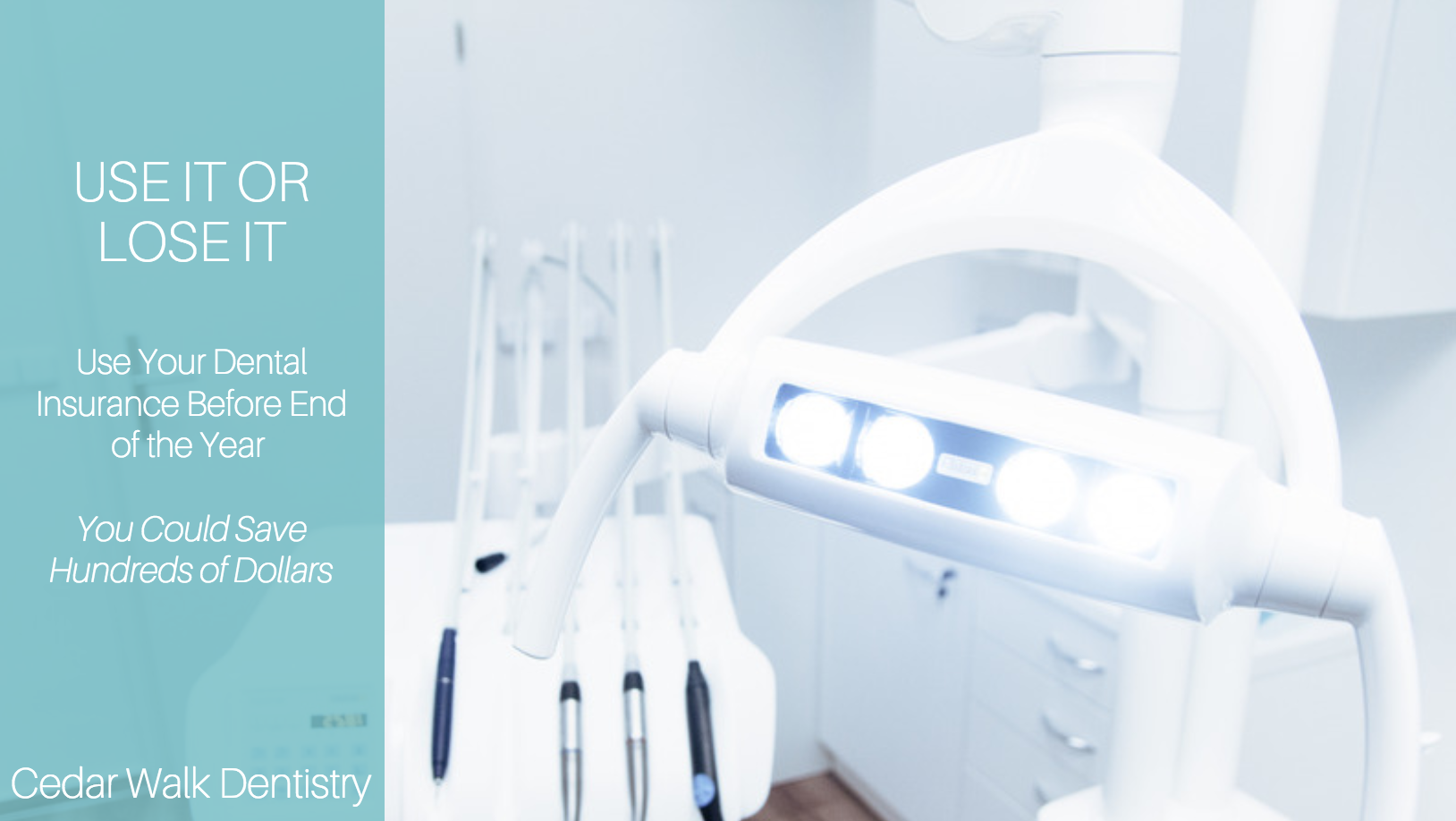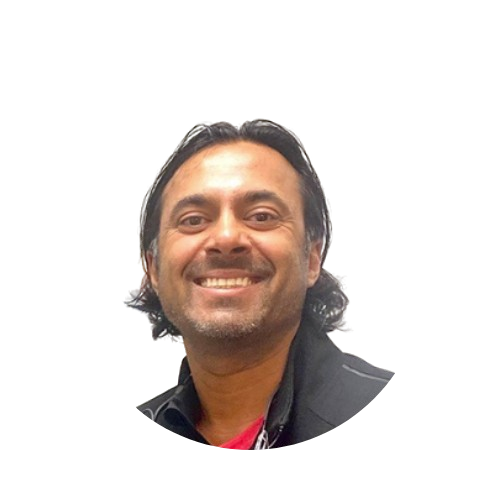Breaking the Opioid Habit in Dentist Offices

Use Your Dental Insurance Before End of the Year (You Could Save Hundreds of Dollars)
November 9, 2017
Happy Holidays from your Cedar Walk Dentistry Team!
December 12, 2017Breaking the Opioid Habit in Dentist Offices
 Dr. Prashant Rao, DDS, a Charlotte native and NYU-trained dentist, specializes in esthetics, dental implants, and preventative dentistry.
Dr. Prashant Rao, DDS, a Charlotte native and NYU-trained dentist, specializes in esthetics, dental implants, and preventative dentistry.

Dr. Rao and Dr. Brikina want to be a part of the solution to the prescription opioid problem in dental offices. From CE courses to sharing information, our Cedar Walk Dentistry office in Charlotte is passionate about this issue. Check out this article from the New York Times about the epidemic and what dentists can do to stop it.
Harold Tu’s “aha!” moment came in front of the Washington Monument.
In October, 2014, Tu, director of the division of oral and maxillofacial surgery at the University of Minnesota School of Dentistry, was visiting Washington, D.C., with his wife. Tu was there to attend an oral surgery conference. Their son-in-law, Dr. Andrew Kolodny, a psychiatrist and addiction specialist, was speaking at a rally of Fed Up!, an organization working for a national response to the opioid epidemic. Kolodny asked his in-laws if they would attend.
About 2,000 people were at the rally, many of them carrying posters or wearing T-shirts with photos of children lost to overdoses. Tu had an epiphany.
“These are pictures of my patients,” Tu said to his wife. “We set young people on the course of misuse and addiction.”
Not deliberately, of course. But every year, oral surgeons remove the wisdom teeth of about three million people. The majority are under 25. And virtually all leave surgery with a prescription for opioids.
Dentists and oral surgeons are by far the major prescribers of opioids for people ages 10 to 19. That’s an age when the growing brain, which doesn’t mature until 25, is particularly susceptible to being taken over by opioids — even if the dosage seems too small to produce addiction.
In fact, even very short-term prescriptions have been associated with later drug misuse among teens who have not used illegal drugs before. Comparatively, this is a very low-risk group; the chances of future misuse and addiction are far higher for teens who have already used other illegal drugs. Nevertheless, a recent study of “drug-naïve” teens found that getting an opioid prescription in high school is associated with a one-third greater risk of future opioid misuse.
“They don’t develop their addiction from that experience,” said Kolodny. “But because of it, they’re no longer afraid of the drug and they like the effect. They’re getting their first taste of the drug from a doctor or dentist, and that increases the likelihood they would use it recreationally.”
Kids who are prescribed any opioids in elementary school have a one-third chance of “lifetime illicit use.” A just-published study of patients who had never taken opioids found that of those who are prescribed just a 12-day supply, one in four are still taking opioids a year later. That’s patients of all ages — it’s likely higher with teens and young adults. (Here and here are more research studies.)
Kolodny argues that the opioid addiction problem is wrongly portrayed — including by opioid manufacturers — as one of evil pill-mill doctors and drug addict patients.
But 75 percent of opioid abusers started by taking a prescription, and 80 percent of heroin users started with prescription opioids. Illegal pill-mill doctors may keep addicts going, but Kolodny argues that it’s the legitimate doctors who get them started. “If we want to begin to reduce the number of new cases that occur each year, we’ve got to prescribe more cautiously,” Kolodny said.
No one advocates prescribing recklessly, but some worry that too much caution could harm those who live with long-term pain. Opioids have ruined the lives of many people — but they’ve also saved many others from unremitting pain. Plenty of people take them without ill effects — for a few days after oral surgery, or even for years if they have chronic pain. For this view, read an article by Maia Szalavitz, who argues that unless pain patients have a predisposition to addiction, they won’t get hooked, and that cracking down on legitimate doctors will unnecessarily punish people in pain.
At Tu’s urging, last year the dental school started a new mandatory protocol to be taught to students and used in clinical treatment: the first-line pain treatment for all dental procedures was to be nonsteroidal anti-inflammatory drugs such as ibuprofen (known as NSAIDs), combined with acetaminophen. In other words, Advil and Tylenol. Exceptions could be made if needed — for example, the patient was allergic to NSAIDs — but had to be documented. If these medicines didn’t control pain, the doctor could re-evaluate and prescribe opioids.
The department is gathering data to present scientifically about how patients are doing, Tu said. “But anecdotally, we have not seen an increase in patient complaints or patients returning saying ‘the NSAIDs are not working; I need something stronger.’ ”
While this is the only example I could find of a mandatory protocol, many places are issuing or have issued prescribing guidelines. The American Association of Oral and Maxillofacial Surgeons did a survey of members’ prescribing and put together a committee to come up with guidelines. “I’ve followed along with Dr. Tu’s work and tailored what I do in my office to their recommendations,” said Douglas Fain, the group’s president. “I think other schools are also looking at what Minnesota is doing.”
Opioids aren’t the only way to control the pain of a wisdom tooth extraction. Other countries, such as Britain, use them far less, if at all.
Since wisdom-tooth extraction is predictable and common, and patients generally healthy, this surgery is widely used to test pain control. The research shows that a combination of ibuprofen and acetaminophen works better after wisdom teeth surgeries than opioids, obviously with exceptions. (Here’s another study.) The pain relief is equal or better, and the ibuprofen also reduces inflammation.
Oddly, dental surgeons know this — and prescribe opioids anyway. In 2006, an American Dental Association survey found that while 74 percent of oral and maxillofacial surgeons preferred that patients use ibuprofen after wisdom teeth extraction, 85 percent also prescribed an opioid. The oral surgeons association survey found that 99 percent of members prescribed opioids — usually along with NSAIDs.
Some believe that both painkillers are necessary. Fain said he has decreased the number he prescribes in his surgery in Olathe, Kan., but still prescribes five to eight opioids for breakthrough pain — “they’re here if you need them,” he said. “We want our patients to have a pleasant experience.”
Other doctors prescribe opioids because patients — or patients’ parents — expect them to. Angie Rake is an oral surgeon who practices in the southern part of the Minneapolis-St. Paul metro area. She supervises oral surgery clinics at the University of Minnesota School of Dentistry, and works with Tu on reducing opioid prescriptions. Rake said that expectations are changing “Early in my career I would give patients 10 to 15 Vicodin, and the parents would say: ‘Are you sure this is going to be enough for my child?’ ”
She said she now prescribes about 60 percent fewer opioids. And she talks to parents about the risks. “Now I have parents thanking me for taking time to educate them,” she said. “And a lot of times they say, ‘We’re really going to try to avoid these.’ ”
Growing up in southern Missouri, Rake was closest to her younger brother. The two were the first in the family to go to college — her brother got a law degree and an M.B.A. When he was 26 he learned he had testicular cancer, and had surgery. He survived the cancer, but fell victim to the pain medicine. Today he is a heroin addict, living on the street in Seattle, Rake said.
“I feel like a sister grieving the loss of a brother who is still alive,” she said.
Like most oral surgeons, Rake removes a lot of wisdom teeth, especially when school is out — 12 sets of them last Friday alone, she said. She used to prescribe opioids to the “vast majority” of her patients. She had been reducing her opioid prescriptions for a while, but the new School of Dentistry protocol gave her the confidence to make a drastic change, she said. The other event that pushed her was the death of the Twin Cities’ favorite son, Prince. “Knowing the history of someone who never abused any substance and was a Jehovah’s Witness confirmed this can happen to anybody,” she said.
Tu has another explanation for reflexive opioid prescription. “I’ve been routinely prescribing opioids starting in the 1990s,” he said. “I think it’s directly related to marketing by pharmaceutical companies. I acknowledge my responsibility in prescribing behavior not based on science, but based on pharmaceutical marketing and reflective of patient expectations.”
With OxyContin’s debut in 1996, Purdue Pharma began an extraordinary marketing push, including an infamous claim that the pills were nonaddictive. The marketing has been well-documented. And wildly successful. According to the Centers for Disease Control and Prevention, the amount of prescription opioids has nearly quadrupled since 1999. Deaths from prescription opioids more than quadrupled.
Tu believes the marketing has lessened. “But I’m not even sure you really need so much marketing, now that it’s such an ingrained part of your practice,” he said.
The current epidemic of opioid death and addiction has led to some action. Some state legislatures have put legal limits on prescriptions. The American Dental Association now says that dentists “should consider” NSAID as their first-line pain treatment. Pennsylvania Dental Society guidelines issued in 2014 said that oral surgeons should prescribe NSAIDs as first-line therapy unless there’s a good reason not to.
The C.D.C. announced last week that opioid prescriptions have dropped since 2010 — but they are still three times as high as in 1999.
In the oral surgeons’ survey, half the respondents said they had decreased their prescriptions of narcotics. The plurality of oral surgeons who responded to the survey said they prescribed 17 to 23 opioids — four to six days’ worth. Fain said he has instituted continuing education on prescribing and constantly raises the issue in his newsletters.
But as in many professional organizations, what rules is a desire to preserve surgeons’ autonomy. The association’s advocacy paper says: “Practitioners should be informed of the latest public health trends, including possible alternatives to opioid pain treatment; but in the end, practitioners should be trusted to treat their patients according to their best professional judgment.”
The problem is that “best professional judgment” too often translates into “I’ve always done it this way.”
“Some argue: ‘I’ve been doing this for many years — what I’ve done prescribing opioids has been effective and my awareness of negative impact is minimal,’ ” Tu said. “But there are those who recognize this is an opportunity to change our prescriber behavior for patients. One of the basic tenets of who we are as health care providers is to address pain and suffering. And balanced against that is our responsibility to do no harm.”
Practice Recognitions
Recent Posts
- How Long Do Same-Day Crowns Last?
- Top Cosmetic Dental Procedures: Start 2025 With a New Smile
- What is a Zirconia Crown
- How To Know If You Need a Root Canal
- Invisalign FAQ: Your Top Questions Answered!
- Invisalign vs. Smile Direct: What Is The Difference?
- Itchy Gums: Causes, Relief, and Prevention
- The Benefits of Dental Implant Surgical Guides
- Wisdom Teeth Removed: 5 Signs You May Need to Remove Yours
- Tips For Wisdom Teeth Pain Relief: All You Need To Know




